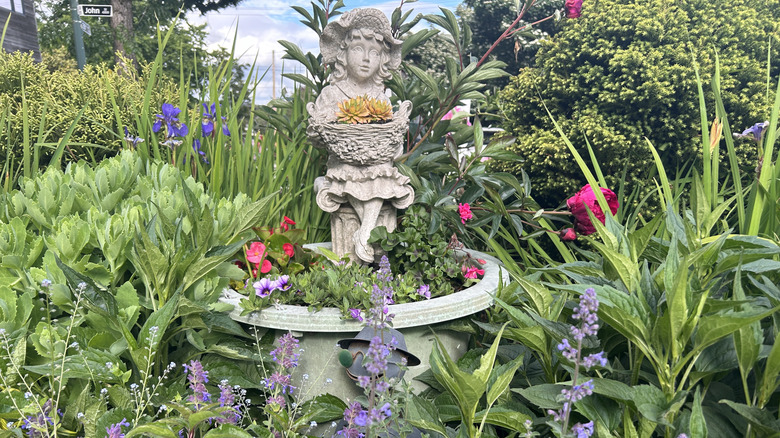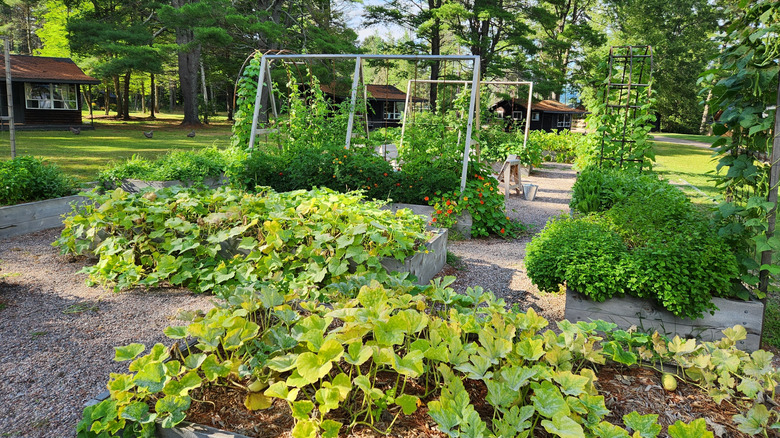Utilizing Raised Beds Brings Order To An Otherwise Chaotic Cottage Garden
While you might love the look of a free-flowing cottage garden filled to the brim with wonderful blooms and aromatic herbs, it can become quite chaotic with the abundant growth. Before you know it, the lines between gardens and meandering pathways become blurred and almost unrecognizable. This can make it extremely difficult to manage and maintain your yard. If you're the kind of person who appreciates a bit of order in your life, the task of taming your slightly overgrown patch could seem rather overwhelming. But, there is a solution which will allow the blending of flowers, vegetables, and herbs while still maintaining a sense of order. To achieve this type of "perfection," why not utilize raised beds to create your ideal cottage garden style? There are plenty of common materials you can use for DIY raised garden beds, or you can buy ready-made kits you just assemble yourself.
Raised beds make it much easier to manage your garden while still allowing you to incorporate that cottage garden feel into the individual beds. You can site your raised beds in such a way that allows for pathways around them for easy access without having to fight your way through a jungle of plants. With this type of setup, you can have different areas that you plant with a range of species that grow well together while still giving the illusion of a rambling and colorful cottage garden.
Ideas for creating your ordered cottage garden
The basic concept behind a cottage garden is that different varieties of herbs, flowers, and vegetables are grown together, often haphazardly. Many of them are allowed to go to seed so they can drop down into the soil and reappear again the following season. This usually means that the yard is always overflowing with a profusion of growth, especially during the warmer months of the year.
To achieve this kind of ordered chaos, you can start with just a few raised beds and position them in interesting ways. Fill the spaces between the beds with gravel or mulch to denote pathways. If you angle your raised planters, you can create the impression of curved paths rather than just straight ones.
Then, choose at least one herb, flower, and vegetable variety for each bed, and interplant these a little randomly so the planting looks natural rather than formal. As each of your gardens starts to grow, add a few more plants to fill in the gaps. You'll find that there are plenty of popular herbs that make the perfect filler plants. You can even add a few structural elements, such as trellises, arbors, or short picket fences. There are no set rules for this style of garden, which means you can grow and mix all the plants you really love. Most importantly, let your summer plants self-seed in the garden so that you always have something new coming up, thus creating an ever-changing landscape of color and interest.

